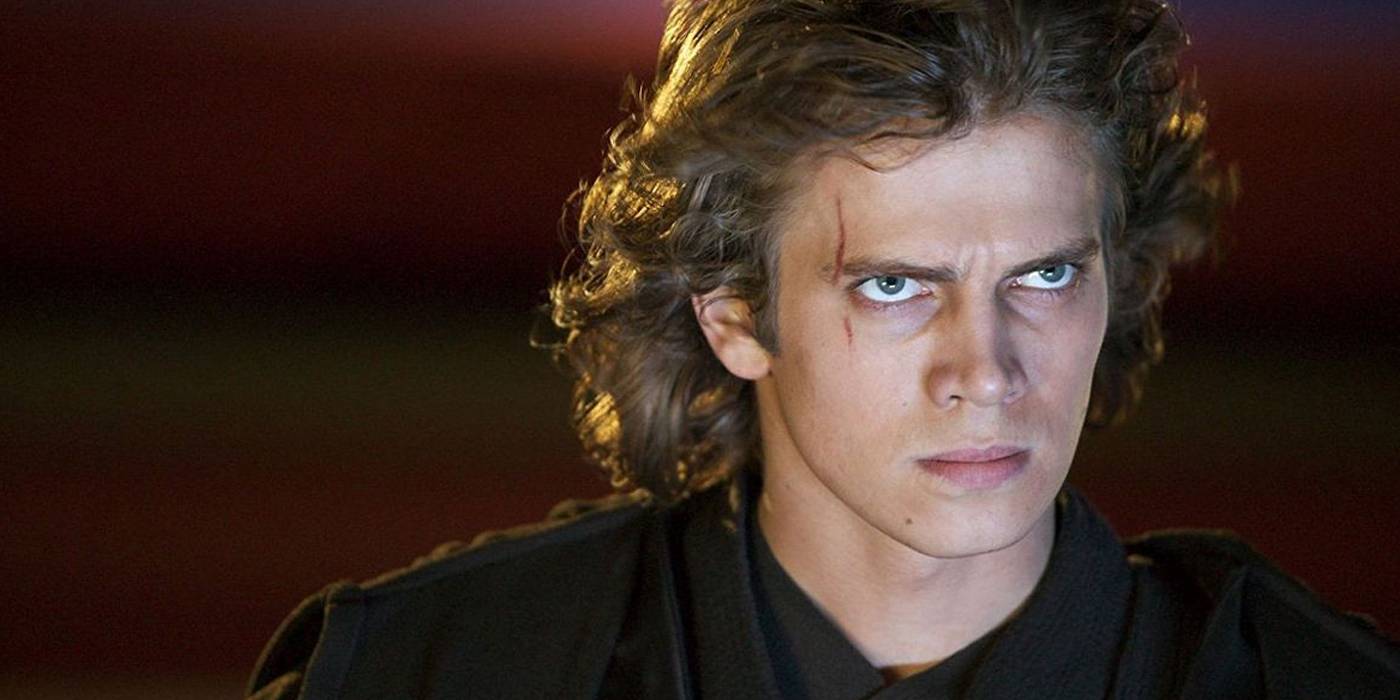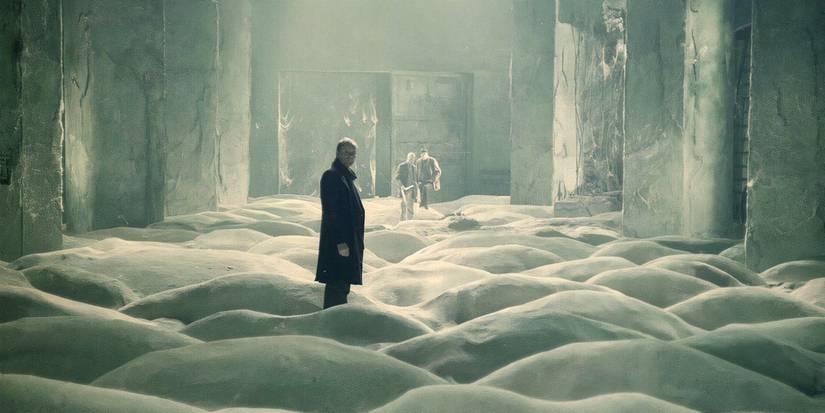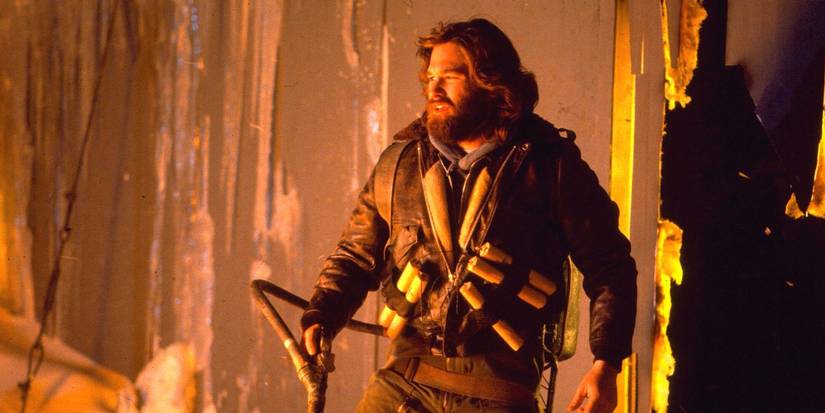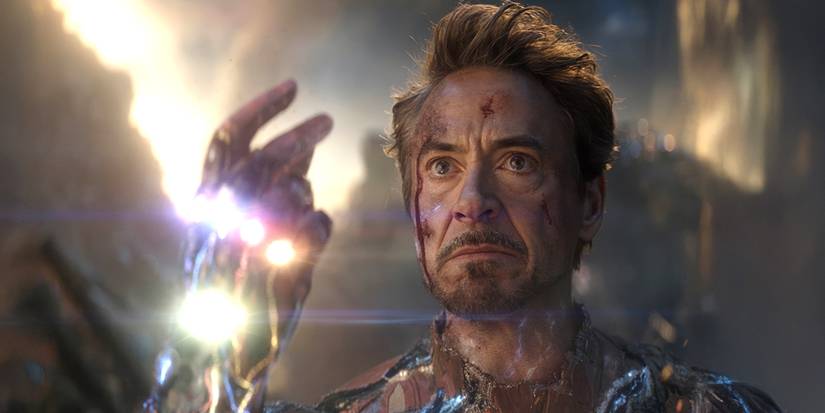
Since the very beginning of narrative cinema at the turn of the 20th century, science fiction has served the medium not only through its appetite for astonishing stories of sublime wonder and awe, but through its endeavor to push technical boundaries as well. Its streak of innovation has seen it stand at the forefront of many pioneering new eras in film. As fate would have it, it has brought a final farewell to some as well.
Whether they closed out particularly important decades for the genre, stood as the closing of a chapter in a specific filmmaker’s career, or signaled the end of a trend that had enraptured audiences for years, these science fiction stunners all mark a curtain call in one way or another. It just so happens that they are outstanding pictures in their own right as well, but their standing as the last of a specific something truly ensures their cinematic legacies.
‘Woman in the Moon’ (1929)
Even with its technical limitations, silent cinema stands as an enduring golden moment for science-fiction movies, a chapter of pioneering excellence, innovative genius, and profound storytelling craft. Fritz Lang was central to this esteem, with his 1927 film Metropolis the defining icon of silent sci-fi. As such, Woman in the Moon stands as the end of two different, though interlinked, eras, marking the last true sci-fi hit of the genre in the silent era as well as the last of Lang’s 15 silent films.
With its story of space exploration being realized with an emphasis on scientific realism rather than cinematic expressionism, the 1929 film exhibits the groundbreaking bravura that the genre is known for. This is most present in its display of space travel that adheres to contemporary scientific principles and its invention of a countdown to zero before a rocket launch. Granted, Woman in the Moon has aged, and its 169-minute runtime is demanding, but it stands entrenched in the annals of cinematic history as the closing chapter of silent era science-fiction.
‘Journey to the Center of the Earth’ (1959)
When one thinks of science fiction cinema, it is impossible not to reflect on the genre’s explosion in the 1950s. At a time when science was exciting people with the dawn of the space race, and simultaneously terrifying them with the onset of the Cold War, it was titles like The Day the Earth Stood Still and The Fly that captivated people’s imagination. The sci-fi splendor of the ’50s effectively came to an end with 1959’s Journey to the Center of the Earth.
Based on Jules Verne’s classic novel, the film combines the wonder of science fiction with a freewheeling and vibrant sense of adventure, providing an entrancing spectacle defined by its outstanding set design and clever use of special effects. Journey to the Center of the Earth is a suitable picture to close out the decade’s divinity in the genre, an appropriately spectacular and silly send-off to the golden era of B-movie science fiction.
‘Stalker’ (1979)
With regard to international cinema in the 20th century, there are few names as celebrated and iconic as Andrei Tarkovsky. The Soviet filmmaker made seven feature-length pictures throughout his career, all of which have become classics of foreign film. With his impressionable poetic style and his focus on themes of spirituality, personal freedom, and memory often featuring a deeply personal and autobiographical undercurrent, Tarkovsky’s filmography has become entrenched in the history of cinema in the Soviet Union.
However, Stalker—only the fifth film in Tarkovsky’s catalogue—stands as the final picture he made in his homeland, with 1983’s Nostalghia filmed in Italy and 1986’s The Sacrifice in Sweden. As such, the absorbingly hypnotic sci-fi drama stands as not only a thought-provoking descent into themes Tarkovsky loved to explore in great detail, but a bittersweet end to his career in the Soviet Union before his exile forced him abroad.
‘The Thing’ (1982)
Defined by the rampant rise in directorial control, the New Hollywood era started in the late 1960s and ran through the ‘70s, seeing such filmmakers as Steven Spielberg, Martin Scorsese, and Francis Ford Coppola rise to prominence while completely re-inventing the movie-going experience. This creative fervor began to fade in the early ‘80s, though, especially as the blatant commercialization of blockbuster films came into vogue. While The Thing didn’t single-handedly bring about the end of the New Hollywood movement, its initial critical and commercial failure certainly didn’t do it any favors.
The irony in this is not only that the film is today considered to be a masterpiece of sci-fi horror, but that both science fiction and horror became defining pillars of 1980s cinema. Unfortunately, with audiences leaning towards more optimistic and hopeful stories, The Thing’s bleak nihilism and brutal body horror were out of sync with contemporary interests, even as its theme of paranoia reflected trending social anxieties linked to the Cold War and the AIDS epidemic.
‘The Right Stuff’ (1983)
Another early ‘80s sci-fi that marks the end of an era, The Right Stuff is perhaps more prominent as the closing of a chapter for American interest in the space race than it is as the farewell of any cinematic style, trend, or career. While the auspicious, science-based epic does signal an end of the auteur-driven and soulful tastes of ‘70s cinema, it also serves as Philip Kaufman’s commentary on the American exceptionalism that thrived through the ‘50s, ‘60s, and into the ‘70s. Nestled within its story of innovation and bravery are observations on fame, symbolism, and the performative propaganda of the space race.
Released amid the Reagan era, as lingering Cold War anxieties were intensifying and notions of greatness truly began to mimic corporate greed, The Right Stuff is a bittersweet reflection on a time when the American Dream was more imaginative, more innocent, and more eager to embrace the wistfulness of life with optimism and hope. With its nostalgic slant, The Right Stuff showcases the dawning of the age of imagination, and, in its very existence in the early ’80s, displays how it was ending as the cynical edge of capitalist totality took hold.
‘Back to the Future Part II’ (1989)
1980s cinema is ultimately defined by the true emergence of the blockbuster; record-breaking box office drawcards designed to deliver a rollicking good time and make a ton of money doing it. The endearing whimsy of sci-fi adventure is paramount to the pioneering of this cinematic movement, and there are few titles in this regard as esteemed as Back to the Future. While the 1985 original rightfully stands as one of the most beloved classics of the decade, it is Back to the Future Part II that effectively closed it out.
While not surpassing its predecessor, the sequel does mimic its appeal, delivering a fun-loving and exciting sci-fi adventure that, with its December 1989 release, quite literally concluded the genre’s excellence in the decade. Even accounting for early ‘90s movies that may have seen the trend continue, Back to the Future Part II stands as something of a closing chapter on the unique marriage of charm and high-concept storytelling that audiences even today still love to go back and revisit as a form of big picture spectacle and pure escapism.
‘Terminator 2: Judgment Day’ (1991)
While the sci-fi adventure films of the 1980s may have had a decisive ending, the decade’s appetite for bombastic action did bleed into the early ‘90s. Interestingly, however, American audiences’ need for cartoonish violence and profound heroism seemed to evaporate soon after the dissolution of the Soviet Union and the effective resolution of the Cold War in 1991. As such, Terminator 2: Judgment Day marks an effective end of the ‘80s action blockbuster in all its bravado and propane-laden glory.
Its sense of action spectacle has aged beautifully, with James Cameron’s hard-hitting practical effects and innovative use of CGI providing a visceral experience of pure action intensity following the T-800’s (Arnold Schwarzenegger) efforts to protect John Connor (Edward Furlong) from an advanced Terminator machine. Released at the perfect time, it embraced the hopeful, sun-soaked aura of a post-Cold War America. However, it still delivered on the huge action set pieces that would soon become an outdated audience interest with the onset of indie cinema, spawned by a new wave of emerging filmmakers like Quentin Tarantino, Richard Linklater, and Spike Lee.
‘The Matrix’ (1999)
Defined by titles like Metropolis and A Trip to the Moon, science-fiction cinema in the 20th century started with an innovative dare, a desire to find new possibilities in filmmaking while exploring stories that pushed creative boundaries. Wonderfully, after the better part of 100 years of pioneering endeavor, progressive filmmaking, and outstanding storytelling, the genre ended the century in much the same fashion, with the groundbreaking success of The Matrix completely recalibrating what was possible in the context of both technical filmmaking and narrative creativity.
Audiences the world over were left dumbfounded by the movie, which projects that the world we live in is merely a simulation and that humanity is being kept in a slumber and used as an energy source by machines in the real world. With its earth-shattering idea and the brilliance of its technical craft, The Matrix doesn’t just stand as science-fiction cinema’s final masterpiece of the 1900s, but as a testament to all the filmmaking excellence the genre produced throughout the century.
‘Star Wars: Episode III – Revenge of the Sith’ (2005)
Across the history of cinema, there has hardly been a title that defines the exciting allure of science fiction quite like Star Wars. Created by George Lucas, the saga originated by incorporating elements from B-movie sci-fi, spaghetti Western grit, and samurai cinema. It centered on the brilliantly realized hero’s journey arc of Luke Skywalker (Mark Hamill) as a means to delve into political commentary, intergalactic adventure, and action excitement. Lucas’ involvement with the franchise’s theatrical releases ended with 2005’s Star Wars: Episode III – Revenge of the Sith.
While the prequel trilogy was originally met with mixed reviews, it has endured as a great marriage of sci-fi and fantasy that largely defines science-fiction entertainment in the 2000s. The next major release of the franchise would be 2015’s Star Wars: Episode VII – The Force Awakens, which not only launched the sequel trilogy but also launched Disney’s command of the saga.
‘Avengers: Endgame’ (2019)
It can be difficult to distinguish eras when living in the midst of them, but for years now, it has been apparent that the early part of the 21st century will be defined by the immense success of superhero cinema. The face—or faces—of this trend are Robert Downey Jr.’s Tony Stark and Chris Evans’ Steve Rogers. While superhero cinema has continued after its release with such films as The Batman and Superman, Avengers: Endgame is the end of an era, given how it farewelled those two characters from the MCU.
In many respects, it is easy to argue that Avengers: Endgame marks the end of superhero cinema’s golden era as well. While there have been some encouraging superhero movies from the 2020s thus far, the MCU has stuttered in the years since, and the stranglehold the genre held on the box office has relented as a result. Granted, the MCU may not be the truest example of sci-fi cinema, but it has always been eager to infuse elements of the genre’s intrigue into its stories. The climax of the Infinity Saga currently stands as one of the most significant ends to an era of 21st-century cinema thus far.
Source link










